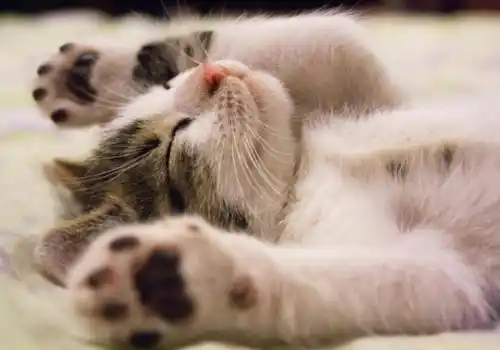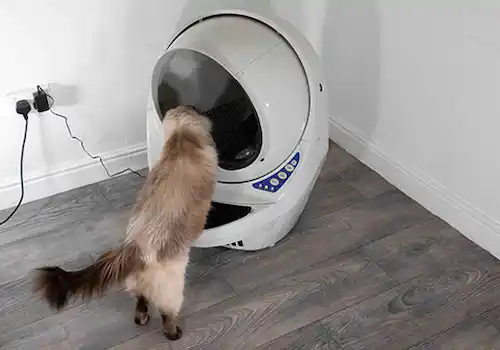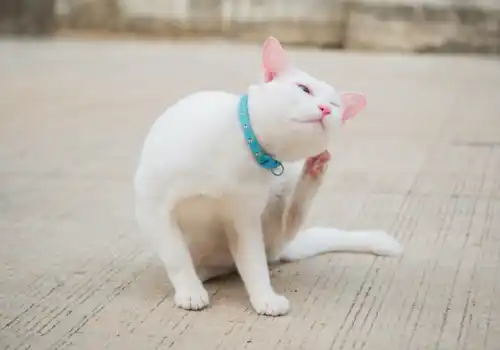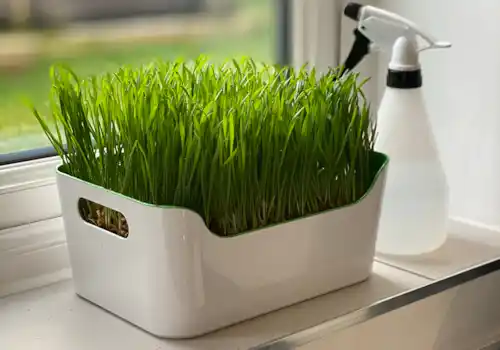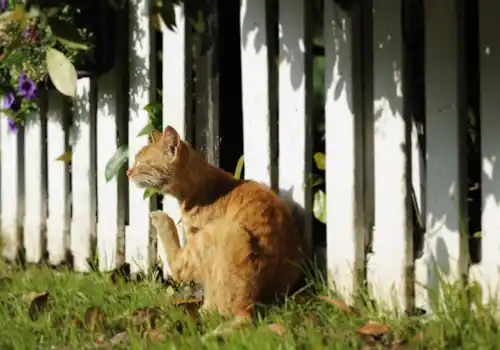Has your cat been diagnosed with diabetes? Here are the top things you need to know about how to care for him, from iCatCare.
The incidence of feline diabetes is on the increase, with a recent UK survey suggesting that nearly one in 200 cats are diabetic. This article addresses the practicalities of dealing with a diabetic cat. Despite being such a common disease, feline diabetes is often surrounded by much confusion. The disease has many differences when compared with diabetes mellitus in people (and in dogs), and it can be difficult to manage. However, with the right information and support, and by working closely with their veterinary practice, owners of diabetic cats usually cope well. Indeed, as an owner, you play a vital role in maximising the chance of successful treatment.
What to expect
If your cat is diagnosed with diabetes, your vet or veterinary nurse will first want to ensure that you fully understand what the disease is, and what the implications are of having a diabetic cat. Any additional concerns that need to be addressed in order to successfully treat the diabetes in your cat, such as obesity, will be discussed.
It will also be explained to you how to store insulin, how to draw up an accurate dose and how to give the injection. You will find out what to monitor your cat for -?in particular, signs of an insulin overdose. You may be asked to collect some urine samples from your cat (and advised how to do this!) and, if necessary, given advice on what diet to feed, how much food to give and when to give it.
Another appointment will be arranged for fairly soon afterwards to assess how you and your cat are getting on.
Did you know?
- Obesity is a common cause of diabetes, so preventing obesity can prevent diabetes in some cats
- Early in the course of the disease you may not notice anything is wrong with your cat. Routine health checks at your veterinary surgery, including urine checks, can help pick up early signs of diabetes
- If diabetic cats are treated and monitored intensively early on, as many as 50-60 per cent of them may recover (in other words, their diabetes will be transient, meaning they won't necessarily need insulin for the rest of their lives). Unfortunately, it is not possible to predict which cats will fall into this category - other cats will require lifelong treatment.
Common questions and concerns
Q) My cat is only 7 years old, so surely can't have diabetes?
A) Although often thought of as a disease of older age, diabetes in cats actually occurs most commonly in the 'mature' life stage - that is, in cats aged seven to 10 years.
Q) My cat has just been diagnosed with diabetes - is his brother also at risk?
A) Diabetes is caused by many different factors. The disease has been seen in sibling cats but there is no firm evidence that genetics plays a role. It is extremely unlikely that the brother will also get diabetes, but he should be monitored for early signs of the disease through routine veterinary health checks, as your cats may share lifestyle risk factors for the condition that should be addressed, rather than a genetic link.
The one exception, however, would be if your cat is a Burmese - the risk in some lines of this breed is one in 10, and there have been many cases where siblings have been affected.
Q) Will my cat need insulin injections for the rest of his life?
A) Many cats will need lifelong insulin treatment. However, when diabetes is detected early in the course of the disease, and optimal treatment (i.e. twice-daily insulin injections) is started promptly, with close monitoring, then in up to 50-60 per cent of cats, the need for insulin may actually resolve, often within the first few months of treatment. So being extra vigilant early on can really pay off!
Q) I just don't think I am going to manage to give my cat injections daily. Aren't there any other options such as tablets?
A) There are tablets that in occasional cases will reduce blood sugar a little, but generally they aren't very effective in cats. They may be worth a try if there really is no possibility of you being able to give insulin daily at home. However, if at all possible, give insulin a go. Most owners find it daunting at first (you are certainly not alone!), but you may be surprised to find that it isn't that difficult once you get used to it. The needles are very fine so your cat will hardly feel the injection - in practice, most people find giving injections easier than giving tablets!
Also, if you start insulin early on there is a good chance that the diabetes may be transient, and your cat will not need lifelong treatment. Conversely, if there is a delay in starting insulin treatment, then it is much more likely that the only treatment option for your cat will be insulin for life. So you really have nothing to lose and everything to gain by giving it a go!
Q) Is one injection a day of insulin enough, or does it have to be injected twice daily?
A) Your vet will instruct you on how often the insulin needs to be given as it will partly depend on the type of insulin being used, and your cat's individual response to the treatment. However, if you can really only manage one injection a day then this is going to be better than not treating the diabetes at all, and you may still be able to achieve good resolution of your cat's signs. However, twice-daily injections will increase the chance that your cat's diabetes may only be transient and that insulin will not be required for life. So, although treatment may be more difficult to manage in the short term, it may well be worth it in the long term.
Q) I work shifts, which means I can't be around to give insulin every 12 hours every day. What should I do?
A) Don't worry, you can work around this. Although the absolute ideal is for insulin to be given at about the same time every day, 12 hours apart if twice-daily insulin is being used, it will not be too detrimental if, for example, on some days insulin is only given once, or there is a slightly longer gap between injections.
Ultimately, the treatment has to be practical for you, and having a slightly different regime is going to be better for your cat than not being treated at all. The only thing to be careful about is not giving the insulin too soon - injections should not be given more frequently than every 10 hours. Work out with your vet a treatment regime that will be most optimal while still being achievable for you.
Q) What happens if I miss giving a dose of insulin?
A) Obviously you should aim to follow your vet's instructions as closely as possible, but if you do miss giving your cat a dose, don't panic. As long as it does not happen regularly, missing the odd dose of insulin will not be detrimental.
Q) Do I need to feed my cat a special diet?
A) Research has shown that feeding a high-protein and low-carbohydrate diet in combination with insulin treatment will improve the control of diabetes and increase the chance of remission from diabetes. There are prescription diets available that are ideally formulated - discuss these with your vet. If for any reason you are unable to feed a prescription diet, then look for the supermarket feline diet with the lowest carbohydrate and highest protein levels, ensuring that you choose a complete diet. Wet diets will be lower in carbohydrates than dry diets, and so are generally preferable.
Usually higher-protein diets are also more palatable. However, if your cat is especially fussy and won't eat a recommended diet, don't worry - it is better that your cat eats normal amounts of a diet that it likes, than ends up not eating enough of the chosen diet.
Q) Do I have to feed my cat at certain times?
A) Generally, you can continue feeding your cat at the same times that you fed him?before he?became diabetic. So, if your cat grazes food throughout the day, it is fine for this to continue. The only exception is if your cat is on a weight-loss or calorie-restricted diet and would eat the whole ration all at once! If this is the case, the food needs to be divided into separate meals. The precise feeding times can be tailored to you and your cat - discuss a feeding regime with your vet.
Q) Can I still give my cat treats?
A) If your cat is on a calorie-restricted diet then any treats need to be 'counted' in his/her daily ration (discuss this with your vet). However, in principle, it is fine to still feed treats. Just avoid treats that are high in carbohydrates and instead choose ones that are high in protein, such as chicken, fish or prawns.
Q) I have an overweight cat but I just can't get him to lose weight. Any tips?
A) Yes, there are plenty of things you can try!
- Have your cat's weight checked regularly at a pet slimmers' clinic or by a veterinary nurse. Regular contact with the pet slimmers' nurse can dramatically help with your pet's weight loss. Feeding quantities may need adjusting in order to find the correct amount for your cat
- Weigh out your cat's daily food allowance in the morning, and place it in a container to divide between the allocated meals. This way you are less likely to overfeed your cat. You can take out a few kibbles to give as treats throughout the day
- It is important that no 'extras' are added to your cat's daily allocated allowance. This includes milk and cat milk!
- Increase your cat's exercise levels gently in collaboration with the pet slimmers' nurse, who can help to design an exercise programme. Cats can exercise by use of toys, light torches etc. Remember, 'little and often' is generally more beneficial for weight loss
- Try placing the food in different areas or hide kibbles around the house/room to encourage your cat to exercise more. A food ball or 'puzzle' feeder is also ideal - making your cat work a little to get its food
- If you have more than one cat, it important to feed them separately and to watch over them when they eat. If just one of the cats is obese, try feeding the others on a high surface that the obese cat cannot jump on to, or perhaps feed them in a box with only a small entry hole that the obese cat cannot squeeze through!
- It is a good idea to inform your neighbours that your cat is going on a weight-loss programme, so they are not tempted to feed it
For the weight loss programme to be successful, you will need to make sure that everyone involved in caring for your cat, and who may feed it, is 'on side'.
Q) How long will it take for the treatment to control my cat's diabetes?
A) Unfortunately, this is very variable and so your vet will not be able to give you a precise answer.
Cats can be very unpredictable in their response to treatment - both in terms of the type of insulin and the dose that they need. While some cats will become stable very quickly, others can take months to stabilise. This can undoubtedly be frustrating, but it is vital not to get impatient. Increasing the dose of insulin too quickly or too frequently can lead to serious problems, and it can end up taking even longer to stabilise the diabetes.
A very low dose of insulin is always used to begin with. Then, depending on your cat's response, this is increased by a very small amount, and no more frequently than every three to five days. Try not to get frustrated if it is taking months to stabilise your cat -?this is normal and you will get there in the end. Patience definitely pays off!
Q) How often will I have to take my cat to the vet?
A) This will depend on your individual cat, but generally you may need to visit the vet at least weekly in the early stages of treatment. This will be tailored, as far as possible, to suit you. If a weekly visit is not workable for you, a schedule with less frequent veterinary visits can be discussed. It is important to be open with your vet about how often you can bring your cat in for a check-up so that the treatment can be tailored accordingly.
Closer monitoring (i.e. frequent check-ups) in the early stages will increase the chance of your cat's requirements for insulin actually resolving, but this is not possible for all owners. Good control, with resolution of the signs of diabetes, is still possible with less frequent check-ups. Once your cat's diabetes is stable, then veterinary check-ups every three to six-months are recommended.
Q) What is involved in monitoring my cat, and what do I need to do at home?
A) Ideally, the more of this information that you can give your vet, the more help it will be in treating your cat's diabetes. However, monitoring requirements will depend on your individual cat, and a realistic schedule of what you can monitor can be discussed and decided with your vet, to take into account your lifestyle and your cat's needs. For example, some owners may choose to take on measuring their cat's blood sugar levels at home; others will feel happier simply monitoring whether their cat's appetite and thirst is increasing or decreasing. In addition to home monitoring, regular check-ups with your vet will be required, as discussed above.
Don't be afraid to ask your veterinary surgeon or veterinary nurse for further information or explanation if there is anything you don't understand at any stage. They will be well aware that owning a diabetic cat can be fairly daunting to begin with, and that there is a lot of information to take in.

